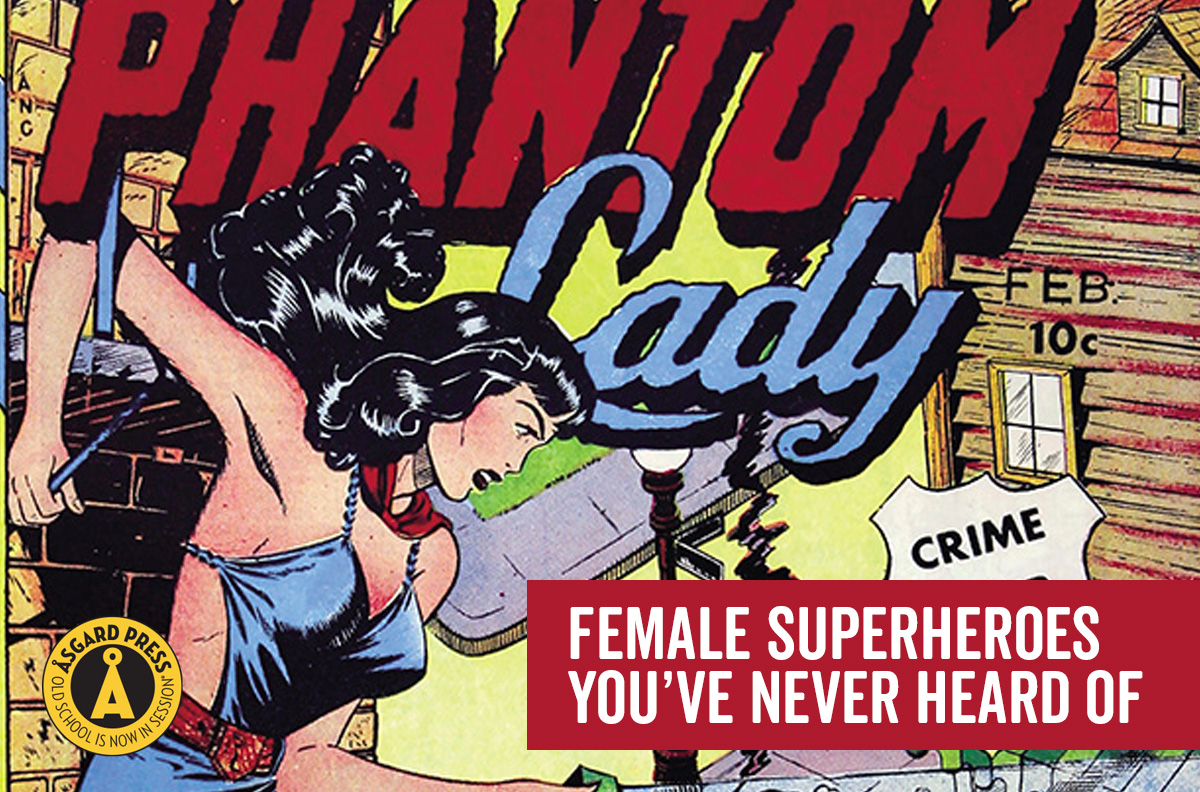Female Superheroes You’ve Never Heard Of
We’ve all heard of the most famous superheroes, the ones who continue to appear in blockbuster after blockbuster. Some of these mega-famous action heroes are women, but there are many more female superheroes out there that you’ve probably never heard of. Presented here are just four of them.
Linda Turner, AKA the Black Cat

Black Cat Comics, published by Harvey Comics between 1941 and 1951, features Hollywood actress and former stunt woman Linda Turner. Suspecting her director, Garboil, of using their film to funnel secret information to the Nazis, Linda disguises herself in non-restrictive, if not skimpy, clothing and a black mask to become the Black Cat. As the Black Cat, Linda uses her stunt expertise to secretly follow Garboil and subsequently foil his plans. She also uses her cinematic expertise to re-edit the film and remove the sensitive communications. Linda’s alter identity works so well, she goes on to have many more adventures. Along the way, she meets Rick Horne, reporter and romantic interest, and Kit Weston, a young boy she rescues from a fire while they are both dangling from a trapeze platform. Linda shares her home with a pet, which is, of course, a black cat.
The Black Cat made her first appearance in Pocket Comics #1 (August 1941) and is believed to have originated in the mind of publisher Alfred Harvey himself. The character was originally illustrated by Golden Age comic book artist Al Gabriele, who is perhaps best known for his work for Marvel Comics’ Captain America. Notably, Black Cat appears at number 41 on the Comic Buyer’s Guide list “100 Sexiest Women in Comics.” Possibly not the legacy that most female superheroes covet, but not one to sneer at either.
Sandra Knight, AKA Phantom Lady

Phantom Lady first appeared in Police Comics #1 (August 1941), published by Quality Comics. The series stars Sandra Knight, daughter of a U.S. Senator by day and crimefighter by night, or whenever she is needed. As Phantom Lady, Sandra makes handy use of a bespoke “black light projector,” a device which simultaneously blinds her enemies while making her invisible. Her car is also outfitted with these ingenious rays in the headlights. Phantom Lady’s original costume consists of a one-piece, body-baring leotard and a green cape, while a later version becomes even skimpier and earned her a more conservative make-over after public outcry. Although Phantom Lady saved the world from master criminals such as the Killer Clown and the Subway Slayer, she is dubiously best known for her outrageous wardrobe selections.
Phantom Lady passed from Quality Comics to Fox Feature Syndicate and Star Publications, and then to Ajax-Farrell Publications, and on to Charlton Comics and I.W. Publications, before finally ending up with DC Comics in 1956. DC gave Phantom Lady an origin story in which she saved her father from a potential assassination and thus acquired a taste for crimefighting. The original Phantom Lady was drawn by Golden Age comic artist Arthur Peddy.
Marla Drake, AKA Miss Fury

Marla Drake is a wealthy socialite who becomes Miss Fury, a crimefighting vigilante and unwitting feminist icon, once she dons an enchanted panther suit she acquires from her maid. First appearing in the Black Fury comic strip in April of 1941, Miss Fury is the first female superhero created and drawn by a female comic artist, June Tarpé Mills. Marla’s black panther suit, probably better described as a catsuit, fits her like a glove and confers upon her super strength, speed, and the ability to climb and execute acrobatic feats. On the very first day she dons the outfit, Marla becomes accidentally involved in an effort to capture fugitive-from-justice murderer Killer Dawson. Her success in collaring the killer, and the mystery surrounding her identity, leads the press to dub her the Black Fury, but Marla makes it clear that their hero is female by publicly announcing her name as Miss Fury.
Miss Fury presents viewpoints through the lens of a female author and illustrator, many of which were ahead of their time. From the role of women during World War II (Marla’s maid later works in a factory) to the eligibility of a single woman to raise a child alone, Miss Fury and her female friends break barriers while intelligently solving crimes. Marla Drake is a more complex character than many female superheroes, at times resentful of her role and the danger it presents. Published by the Bell Syndicate, the Miss Fury comic ran until 1952.
Claire Lune, AKA Moon Girl

Claire Lune, American junior high history teacher, is secretly a warrior princess from an isolated female tribe, who is also secretly a superhero fighting crime as Moon Girl. Claire’s powers come from her lineage as Princess of the Moon, and from the moonstone she wears as a talisman around her neck. This stone gives Moon Girl super strength, makes her invincible in battle, and gives her superiority over all men, making here even more of a feminist icon than Miss Fury. In a role reversal not often seen at the time, Moon Girl’s assistant in villain banishing is Prince Mengu, a man she once met, and defeated, in battle, who is also living as a teacher under an assumed name, Coach Lionel Manning. In addition to her moonstone, Claire also possesses a moonship, a marvel of technology that she can control with her mind.
Moon Girl first appeared in The Happy Houlihans #1 (Fall 1947), published by EC Comics, and was created in part by Sheldon Moldoff, who became famous for his work with DC Comics and Batman. After featuring in a number of different titles, including Moon Girl and the Prince, Moon Girl, and Moon Girl Fights Crime!, Moon Girl and the series eventually fizzled out after a 12-issue romance spin-off, becoming Weird Fantasy with issue #13. Of note, Moon Girl #5 features two macabre stories with a zombie theme, presaging the later success of horror comics at EC Comics.
More Golden Age female superheroes, and even some male ones, can be found in our 2024 Vintage Golden Age Comics Calendar. Each month features a faithfully restored comic book cover, which can be easily removed and fits a standard 11”x14” frame.

